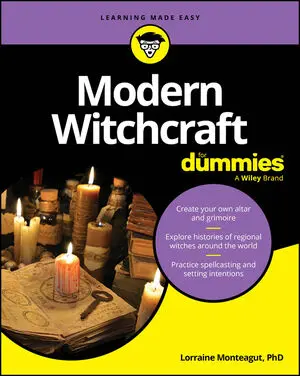Articles & Books From Religion & Spirituality
Article / Updated 06-12-2026
A full astrological chart with its web of planets, signs, houses, and aspects, is as complex and confounding as an actual human being—and just as hard to understand. To get a sense of your chart without drowning in detail, concentrate on these factors: The sunThe sun reflects your basic identity — your motivations, needs, will, and individuality.
Cheat Sheet / Updated 05-12-2025
Whether you’re an experienced tarot or oracle card reader or just acquired your first deck, this Cheat Sheet is a quick guide to help you along your card-reading journey. Find tips for reading at events, help with what card symbols mean, and ways to avoid cold reading. And if you’ve wondered if a digital deck is just as good as a printed one, this Cheat Sheet covers that, too.
Learn to divine the wisdom of the cards with this beginner-friendly reference Tarot & Oracle Card Reading For Dummies gives you the tools and expertise you need to become the savvy card reader you've always wanted to be. Inside, you'll find complete information on the meanings of the 78 tarot cards as well as insights into working with oracle card decks of all kinds.
article / Updated 05-02-2025
The College of Cardinals elects the pope. Nope, that’s not a university where priests and bishops learn how to become cardinals. Unlike Notre Dame and The Catholic University of America, the College of Cardinals merely refers to all the cardinals around the world, just as the College of Bishops is a way of describing all the world’s Catholic bishops.
Unlock the wisdom, guidance, and spiritual insight of the Talmud The Talmud For Dummies introduces you to the Jewish guidebook on life and overall cornerstone text of Judaism, the Talmud. This easy-to-understand book makes the Talmud's 63 volumes approachable, so you can deepen your understanding of Jewish teachings.
Explore one of the fastest-growing religions in the world The Church of Jesus Christ of Latter-Day Saints is the first Christian faith to be developed in America, and today the Church is home to millions—both inside and outside the United States. Mormonism For Dummies, 2nd Edition is a valuable tool for individuals interested in learning more about the beliefs and practices of the widely-practiced Latter-day Saint faith.
A contemporary guide to the roots, paths and tools of witchcraft. A new generation of witchcraft is here! Today, witchcraft encompasses many different paths and is one of the most rapidly growing sets of spiritual systems in the world. Modern Witchcraft For Dummies walks you through what it means to be a modern witch—going beyond the Euro-pagan traditions and Wicca—and how to ensure your witchcraft moves toward inclusivity and spiritual activism.
Discover one of the world's most popular belief systems Hinduism is a fascinating and widespread religion with a diverse array of traditions, practices, scriptures, and deities. In Hinduism For Dummies, 2nd Edition, you'll get a clear view into this widely-practiced and ancient creed. The book contains an easy-to-follow introduction to Hinduism, including its four different sects—Vaishnavism, Shaivism, Shaktism, and Smartism—it's major rituals, and its most sacred teachings.
A trustworthy, easy-to-read guide to an integral part of Judaism Kabbalah For Dummies, 2nd Edition is your factual and objective guide to understanding Kabbalah—a spiritual practice, also known as the “received tradition,” that's connected to Judaism. This easy-to-follow resource walks you through how to connect to and better understand the Kabbalistic way of life, through explaining what Kabbalah is and isn't and detailing the Kabbalistic approach to the Torah, the Talmud, the Mishnah, and more Jewish texts.
Learn about the beliefs, history, and culture of the world's most popular religions World Religions All-In-One For Dummies offers an easy starting point for anyone curious to investigate religious and cultural differences. In terms anyone can understand, this book explains the foundations of major world religions, including Christianity, Judaism, Hinduism, Islam, Buddhism, Mormonism, Catholicism, and Taoism.







